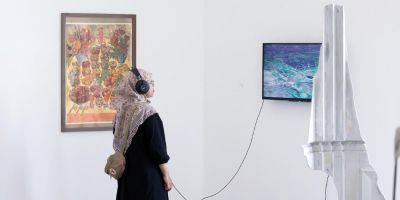MA Arts Management and Heritage Studies case study: Royal Armouries, Archives Digitisation Project
Students studying on the MA Arts Management and Heritage Studies course at the University of Leeds take on a placement as part of their degree.
MA students, Yan Liu and Hanlun Ren, recently completed placements with the Royal Armouries in Leeds.
In this second in our series of case studies, we look at the importance of work placements for MA students, from the perspectives of both student and placement provider.
Philip Abbott, Archives and Records Manager, and Caroline Walter, Archives Digitisation Officer at the Royal Armouries, introduce this Leeds-based national museum and talk of the benefits of taking on placement students from the MA programme.
What is the Royal Armouries?
“The Royal Armouries is the United Kingdom’s National Museum of Arms and Armour, and one of the most important museums of its type in the world.
“The core collection originated in the nation’s working arsenal, which was assembled over many centuries at the Tower of London. During the reign of Elizabeth I, selected items from the arsenal began to be arranged for display to visitors, making the Royal Armouries heir to one of the oldest visitor attractions in the country.
“The collection, totalling around 75,000 items, is displayed over three sites: a purpose-built museum in Leeds, the Tower of London, and Fort Nelson near Portsmouth. Since 2005, the museum has also managed the national collection of firearms, started in 1631 by Charles I and assembled by the British Army (now housed at the National Firearms Centre).”
How long has Royal Armouries been taking placement students from the University of Leeds?
“We have taken on placement students from the University of Leeds and other academic partners for the past ten years or so. These placements vary in length from a few weeks to months depending on their nature and purpose.
“Some departments, such as our Registrar’s, offer regular opportunities, though other placement students are taken on for specific projects. Many of these have turned into longer relationships and some have evolved into paid opportunities.”
What is the Royal Armouries’ perspective on hosting placement students?
“The Armouries takes students on placement for a number of reasons. The Museum benefits directly in that students on placement are often able to work on small projects with minimal supervision. This allows them to take on projects which, although important, would not be cost-effective in terms of using the Museum’s permanent resources. However, the Armouries also places a high value on its partnerships with other academic institutions, and student placements is part of maintaining and building these relationships.
“As a national museum, the Armouries recognizes that it has a responsibility to the profession to provide opportunities to students and others who are interested in becoming museum professionals (curators, conservators, registrars, archivists etc.). It is how many of the Museum’s staff started out themselves. The students often stay in touch with the institution/members of staff long after they have left university, whether or not they become a museum professional, so there is a long term benefit to the individual and the Armouries.”
The Royal Armouries museum ©Royal ArmouriesWhat are the skills new graduates are going to need to make a career in arts administration or curation?
“The Armouries has a very diverse workforce, and the skills required vary according to individual departments.
“For an Archives Assistant (entry level non-professional) in the Archives and Records Management department, we would be looking for a good first degree in a relevant subject and a commitment to working in the profession as essential, with experience of working in an archive or special library as desirable.
“For an Assistant Archivist/Records Manager, we would be looking for a relevant first degree and postgraduate qualification in archives and records management as essential and relevant experience as desirable. However, it has been recognized that as a profession we don’t offer alternative entry points, and in the next strategy for archives (currently being developed by the National Archives in consultation with various stakeholders) there may well be more emphasis on internships and apprenticeships of some form of another.”
Student perspective from MA Art Gallery and Museum studies students
Yan Liu said:
‘I learned a lot during our placement in Royal Armouries.
“First of all, the placement made me understand the contents of introduction training and organization chart in the museum. Second, through visiting the archive and collection stores, I learnt the classification methods of archives and exhibits.
“Third, I learned many photography and image progressing techniques from the progress of archives digitalization. Fourth, I found out what ways the staff of a museum can use to research work.
“Finally, I understand how a museum provides public education to audiences.”
Hanlun Ren said:
“I would like to add a point about the sense of historical responsibility in the museum’s public education. Through various forms of exhibition and education activities, visitors can learn the history of weapons and war, but they can also feel the evil and harm brought by war and weapons. This sense of historical responsibility of the Royal Armouries is very important.”
You can read more about Yan and Hanlun’s placement here on a blog post on the Royal Armouries website.




